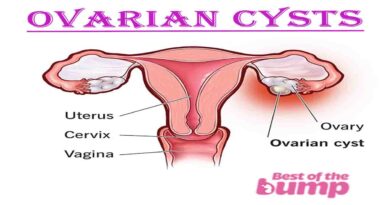Eclampsia During Pregnancy
In recent decades, there has been a noticeable increase in pregnancy and postpartum complications related to high blood pressure, such as preeclampsia and eclampsia, in the United States. These conditions pose significant risks, potentially leading to severe and life-threatening problems for both mothers and infants. However, early detection significantly improves manageability.
Understanding eclampsia, and its connection to preeclampsia, and taking proactive measures are crucial for expectant mothers to safeguard their health. Below, we explore essential information that every mom-to-be should be aware of regarding these conditions and offer insights on protective measures.
What is eclampsia?
Eclampsia is a serious and potentially life-threatening complication that can occur during pregnancy or shortly after childbirth. It is often preceded by a condition called preeclampsia, which is characterized by high blood pressure and signs of damage to organs, such as the liver and kidneys. If preeclampsia is not effectively managed, it can progress to eclampsia.
Eclampsia is marked by the onset of seizures (convulsions) in a pregnant woman who has preeclampsia, and it can also occur during labor or after delivery. These seizures can lead to various complications, including brain and organ damage.
The exact cause of eclampsia is not fully understood, but it is believed to be related to problems with the placenta and blood vessels. Women with preeclampsia, young pregnant women, and those with a history of hypertension are at a higher risk of developing eclampsia.
Prompt medical attention and intervention are crucial in managing eclampsia. Treatment may involve controlling seizures, managing high blood pressure, and delivering the baby, depending on the gestational age. Regular prenatal care and monitoring play a vital role in early detection and prevention of eclampsia. Pregnant individuals should be aware of the signs and symptoms of preeclampsia, such as high blood pressure, protein in the urine, severe headaches, and vision changes, and seek medical attention if they experience these symptoms.
What causes eclampsia?
The exact causes of preeclampsia and eclampsia remain elusive, and researchers are actively investigating various factors that might contribute to these pregnancy complications. While a definitive explanation is yet to be identified, potential factors that are believed to play a role include:
- Blood Vessel Problems: Issues with blood vessels, their function, or structure.
- Brain or Nervous System Problems: Complications related to the brain or nervous system.
- Genetic Factors: Inherited factors that may increase the susceptibility to preeclampsia and eclampsia.
- Placental Abnormalities: Problems with the placenta, such as insufficient blood flow.
- Environmental Exposures: Exposure to certain environmental factors that might contribute to the development of these conditions.
- Cardiovascular Changes or Inflammation: Alterations in the cardiovascular system or inflammation within the body.
- Hormonal Imbalances: Disruptions in hormonal regulation.
- Maternal Diet: The mother’s dietary habits and nutritional intake during pregnancy.
- Certain Autoimmune Disorders: Presence of autoimmune disorders that can affect pregnancy.
Understanding the interplay of these factors and how they contribute to preeclampsia and eclampsia is an ongoing area of research in maternal health.
What are the symptoms of eclampsia?
Eclampsia is often characterized by seizures, loss of consciousness, or severe agitation, typically occurring close to or during delivery. Additionally, postpartum seizures may manifest within the first 48 hours after childbirth. While seizures are a prominent symptom of eclampsia, they are usually preceded by other warning signs. Women at risk of eclampsia may experience:
- Severe Headaches: Intense headaches can be an early indicator of eclampsia.
- Nausea or Vomiting: Persistent nausea or vomiting may be associated with the development of eclampsia.
- Stomach Pain: Abdominal pain, particularly in the upper abdomen, can be a symptom to watch for.
- Hand or Facial Swelling: Swelling, especially in the hands or face, may be indicative of the condition.
- Vision Disturbances: Changes in vision, such as double vision, blurred vision, or the presence of missing areas in the visual field, can precede eclampsia-related seizures.
These warning signs are crucial indicators that should prompt immediate medical attention. Recognizing and addressing these symptoms promptly can contribute to the effective management and prevention of complications associated with eclampsia. Regular prenatal check-ups and communication with healthcare providers are essential for monitoring and addressing potential risks during pregnancy.
How does eclampsia differ from preeclampsia?
Eclampsia can arise as a complication of untreated preeclampsia, a condition characterized by a sudden and significant increase in blood pressure during pregnancy or shortly after childbirth.
When preeclampsia is not adequately identified, diagnosed, and managed, it has the potential to progress and transform into eclampsia. Eclampsia is marked by seizures and/or loss of consciousness in pregnant or postpartum women. In severe instances, it can even lead to a coma.
While the concept of eclampsia may evoke concerns, it’s essential to recognize that this complication is exceptionally rare. Although 5 to 8 percent of pregnant women in the U.S. are diagnosed with preeclampsia, the majority of cases can be effectively treated before escalating to eclampsia. Regular prenatal care, early detection, and appropriate medical interventions play a crucial role in managing and mitigating the risks associated with these conditions.
Who is most at risk for eclampsia?
Women with preeclampsia have an increased likelihood of developing eclampsia. Several factors can elevate the risk of being diagnosed with preeclampsia and subsequently experiencing eclampsia:
- Age Over 35: Advanced maternal age, particularly being over 35, is associated with a higher risk of pregnancy complications, including preeclampsia and eclampsia.
- Ethnicity (Black): Black women face a higher likelihood of encountering preeclampsia and eclampsia, with a 60 percent increased risk compared to white women.
- Medical Conditions: Certain health conditions, such as diabetes, high blood pressure, kidney disease, or autoimmune diseases like lupus, can contribute to blood vessel and organ damage, increasing the susceptibility to preeclampsia and eclampsia.
- Obesity: Being obese is linked to a greater risk of high blood pressure and complications during pregnancy, including preeclampsia.
- History of Preeclampsia or Pregnancy Complications: If you or a family member has a history of preeclampsia or experienced complications in a previous pregnancy, the risk may be higher.
- Multiple Pregnancies: Carrying twins, triplets, or other multiples raises the chances of pregnancy risks, including preeclampsia and, if left untreated, eclampsia.
- Pregnancy Spacing: Women with pregnancies spaced fewer than two years apart or more than 10 years apart may be at a higher risk.
- Infertility Treatments (IVF): In vitro fertilization (IVF) has been associated with an increased risk of preeclampsia, although modified natural IVF cycles might have a lower risk compared to programmed cycles, according to some research.
How is eclampsia diagnosed?
See this also –
- Chorioamnionitis During Pregnancy | Intrauterine infection
- Positive Parenting Affirmations to Boost Your Mental Health
- Fifth Disease During Pregnancy
- Choriocarcinoma During Pregnancy | Symptoms, Causes, Treatment
- Cord Prolapse During Pregnancy
- Deep Vein Thrombosis (DVT) During Pregnancy and Postpartum




